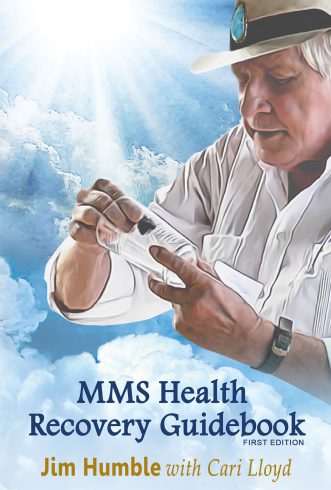- Posts: 2
- Thank you received: 0
 mms + dmso for teeth and receeding gums
mms + dmso for teeth and receeding gums
- Shantelle1231
-
 Topic Author
Topic Author
- Offline
- New Member
-

Less
More
08 Jun 2021 09:15 #69344
by Shantelle1231
mms + dmso for teeth and receeding gums was created by Shantelle1231
hi any information on starting protocol for teeth and gums not so sure how many drops of dmso to use with mms1
Please Log in or Create an account to join the conversation.
- CLO2
-

- Offline
- Administrator
-

08 Jun 2021 10:14 #69347
by CLO2
Replied by CLO2 on topic mms + dmso for teeth and receeding gums
mmsinfo.org/infosheets/MMS1_Teeth_Brushing_Procedure_pH_Testing_Results.pdf
It has been suggested to use alkaline water when making a teeth brushing solution, so the pH will not be acidic.
Alkaline water should be available in your grocery store.
Measure pH with pH test strips.
From Andreas Kalcker's book, Forbidden Health:
Procedure
1. Add 10 ml of CDS to a glass with 200 ml of water and use it as a mouthwash and gargle, 3–4 times in one day for three minutes (do not swallow).
2. Later, use only once a day.
3. Alternatively, you can use the mixture to brush your teeth and massage the gums.
4. For severe inflammations, add 1 ml of DMSO to the mix (see below).
Notes:
» While CD can also be used for the mouthwash (10 activated drops in 200 ml of water), CDS is the better choice due to its neutral pH that doesn’t affect tooth enamel.
» The protocol has been highly successful both before and after any dentistry work, especially as a precaution with implants, rendering antibiotics unnecessary, thanks to its strong disinfectant properties.
» If teeth feel sensitive while chewing, there may be an underlying infection around the root. In this case, brushing isn’t enough, and you can add DMSO at 70% water dilution to the mix.
» In the case of acute tooth pain, you can increase the dose up to 20 ml of CDS in 200 ml of water. Take a sip and hold it in your mouth for about two minutes. Usually, acute pain is caused by bacteria in a dental cavity, affecting the nerve. Typically, the pain disappears when the nutrients that can feed the bacteria cease to exist. This protocol may remove dental abscesses. There is no need to rinse the mouth with water.
It has been suggested to use alkaline water when making a teeth brushing solution, so the pH will not be acidic.
Alkaline water should be available in your grocery store.
Measure pH with pH test strips.
From Andreas Kalcker's book, Forbidden Health:
Procedure
1. Add 10 ml of CDS to a glass with 200 ml of water and use it as a mouthwash and gargle, 3–4 times in one day for three minutes (do not swallow).
2. Later, use only once a day.
3. Alternatively, you can use the mixture to brush your teeth and massage the gums.
4. For severe inflammations, add 1 ml of DMSO to the mix (see below).
Notes:
» While CD can also be used for the mouthwash (10 activated drops in 200 ml of water), CDS is the better choice due to its neutral pH that doesn’t affect tooth enamel.
» The protocol has been highly successful both before and after any dentistry work, especially as a precaution with implants, rendering antibiotics unnecessary, thanks to its strong disinfectant properties.
» If teeth feel sensitive while chewing, there may be an underlying infection around the root. In this case, brushing isn’t enough, and you can add DMSO at 70% water dilution to the mix.
» In the case of acute tooth pain, you can increase the dose up to 20 ml of CDS in 200 ml of water. Take a sip and hold it in your mouth for about two minutes. Usually, acute pain is caused by bacteria in a dental cavity, affecting the nerve. Typically, the pain disappears when the nutrients that can feed the bacteria cease to exist. This protocol may remove dental abscesses. There is no need to rinse the mouth with water.
The following user(s) said Thank You: paul, stu77000
Please Log in or Create an account to join the conversation.
Time to create page: 0.264 seconds

